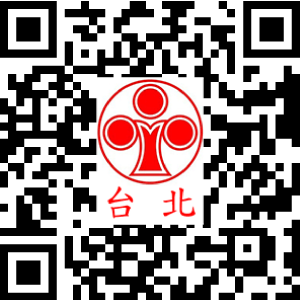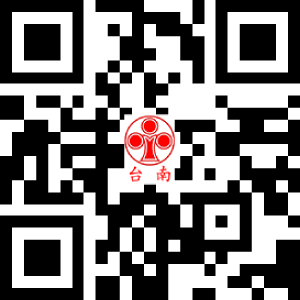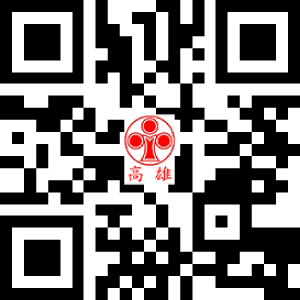
More Detail
壹、概述
美商蘋果公司(Apple Inc., 以下稱 “蘋果公司”)與韓國三星電子(Samsung Electronics co., Ltd., 以下稱 “三星電子”)的專利戰在全球纏訟多年,而在美國,今年5月18日美國聯邦巡迴上訴法院(United States Court of Appeals for the Federal Circuit 簡稱CAFC)(註二)維持北加州地方法院(District Court for the Northern District of California)的判決,認為三星電子侵犯蘋果公司一件設計、兩件發明專利,有關Trade Dress部分則認為蘋果公司Trade Dress具功能性,不應受到保護,因而撤銷原審針對減損(dilute)Trade Dress的賠償金,並將此案發還下級法院重新計算賠償金額,此判決讓三星電子原本被判約9.5億美金的賠償金額因此將獲大幅調降。而這件涉及天價賠償金額之判決,再度引起許多人對Trade Dress保護之廣泛重視及討論。
貳、Trade Dress美國實務發展
Trade dress最初僅指商品的包裝或裝飾,但近年來涵蓋之範圍已擴大到包括商品本身或外觀之設計。它通常被定義為商品的整體印象和整體外觀,或商品全部的元素,亦或是指「包括商品大小、形狀、 顏色或顏色組合、 紋理、 圖形等特徵(註三)」,亦即呈現在消費者面前的是這些要素的組合所創造出的商品或服務之整體視覺印象或外觀;而美國不正競爭法整編(Restatement of Unfair Competition)所定義之Trade Dress亦將服務納入:「Trade Dress係指賣場內要約販賣商品或服務的整體形象或外觀;傳統上包括標籤、包裝紙、產品容器的外觀,以及將商品或服務呈現給相關消費者的展示品或其他物件」(註四)。
Trade dress與商標兩者使用目的在本質上相同(註五),避免因為消費者發生混淆誤認而發生誤購的情形。在美國Trade Dress與商標同樣受到Lanham Act(註六)之保護,兩者亦同樣不需經主管機關或制度之註冊登記作為主張商標或Trade Dress權利之前提要件- Stevens 大法官在Two Pesos, Inc. v. Taco Cabana, Inc.一案的協同意見書( concurring in the judgment)中表示:「最高法院將第43條(a)項(註七)解釋為侵害未經註冊的商標或Trade Dress的聯邦法訴因,並認為未經註冊的商標與Trade Dress在本質上應受到與已獲註冊者相同的保護(註八)。」目前美國法院所承認保護之Trade Dress 分為兩大類型,即:商品包裝 (包括包裝外觀、提供服務場所的外觀設計及內部裝潢、標籤圖形、顏色或顏色組合、紋理等) 及商品設計(包括形狀、外觀、相較於包裝之商品本身之設計)。
然而並非任何商品包裝或設計均可作為Trade Dress而受到Lanham Act保護,Trade Dress如欲取得註冊及獲得保護,須符合兩大要件:識別性 (distinctiveness) 以及非功能性 (non-functional)。
1.識別性(distinctiveness)
美國最高法院認為識別性係Trade Dress依Lanham Act於主要註冊簿(the principal register)取得註冊之先決要件,若Trade Dress不具有識別性,則他人以不正競爭方式使用近似之Trade Dress,並不會構成消費者的混淆誤認(註九),則無法以違反Lanham Act第43條(a)項主張侵權。
對於判斷Trade Dress之識別性是否應如判斷商標之識別性,將之區分為先天識別性 (inherently distinctiveness)及後天識別性 (acquired distinctiveness,或謂取得第二層意義secondary meaning(註十)),美國各級法院原有許多不同之見解,有些主張Trade Dress 均無先天識別性,需證明已取得第二層意義方能得到Lanham Act及不正競爭法 (Unfair Competition Law) 之保護(註十一);有些則主張商標法只要求在於所尋求保護之的商標不足以讓消費者識別其製造商時,才需要證明第二層意義(註十二),相同的原則應適用於Trade Dress之保護,因此已具先天識別性之Trade Dress無須證明是否已取得第二層意義。美國最高法院在2000年Wal-Mart Stores, Inc. v. Samara Brothers, Inc.一案判決中認為,商品設計,就像顏色,不具有先天識別性,不似文字標章或商品包裝,消費者自然、自動地認為其有識別來源的作用,需取得第二層意義方能受到保護(註十三)。在上述判決之後,美國實務上在Trade Dress是否需要證明已取得第二層意義方能受到保護,須取決於Trade Dress之類型係為商品包裝或是商品設計。對於商品包裝,適用最高法院1992年Two Pesos, Inc. v. Taco Cabana, Inc.一案之原則(註十四),即Trade Dress不排除具有先天識別性,若判定無先天識別性,則須證明已取得第二層意義;而對於商品本身之設計,則一定必須證明已取得第二意義才受保護。
2.非功能性(non-functional)
功能性的認定,必須是系爭功能的專用會使相關競爭者受到顯著的與商譽無關的不利益(註十五),在Trade Dress方面,係指該Trade Dress之設計及其特徵 (包括形狀、顏色、材質等) 是其相關競爭同業於市場上使用所必要或不可或缺者。因此,若具功能性之Trade Dress享有專屬排他權利,將影響並阻礙該類商品競爭同業之公平競爭。對已獲註冊保護之Trade Dress,其非功能性之特性應已受審查認定,倘未註冊之Trade Dress,若欲以主張原告之Trade Dress 為功能性作為積極抗辯理由或提起侵害之民事訴訟時,主張Trade Dress應受保護之人,應負證明Trade Dress為非功能性的舉證責任(註十六)。
參、蘋果三星之爭
蘋果公司於2011年在美國加州地方法院對三星電子提出有關使用者介面與操作的專利侵權及減損Trade Dress之訴訟,此案在2012年,地方法院陪審團作出侵權及減損成立之決定,三星電子因此需支付蘋果公司10.5億美金賠償金額。雖經三星電子提出post-trial motion後,地方法院重新審查及計算賠償金額後,將賠償金額降至約9.5億美金,三星電子不服,在2014年上訴CAFC。
本案中有關Trade Dress部分,蘋果公司分別就尚未註冊之iPhone 3G/3GS Trade Dress及已獲美國專利商標局核准註冊之第3470983號外觀商標主張三星電子減損其Trade Dress及商品外觀商標。蘋果公司主張之iPhone Trade Dress特徵包括:具有四個平滑圓角的長方形商品、平面乾淨的表面、顯示器就在乾淨表面的下方、顯示器上下有較多的黑框及左右兩側黑框較窄,以及當商品啟動,在螢幕上將出現一排小點及陣列式的彩色方型具四個圓角圖示(icon),而在螢幕最下方有一擺放固定不改變位置icon的區塊(註十七)。CAFC 認為Trade Dress係指商品或服務的包裝或呈現之整體要素(註十八)和商標同為用來讓消費者辨識商品產製來源之標示,而保護辨識產製來源與「透過模仿競爭者商品之競爭基本權利」需作一權衡比較(註十九)。主張商品外型設計Trade Dress之保護原就比其他形式之Trade Dress來的困難(註二十),一般而言,當商品的特徵為商品之實用性或用途之主要因素,或是將影響商品之價格或品質時(註二十一),通常具有功能性。因此CAFC認為本案需先確定蘋果公司所主張iPhone的Trade Dress是否為非功能性而為可受保護(註二十二)之標識。
CAFC認為蘋果公司無論對未註冊之Trade Dress或已獲註冊之第3470983號外觀商標均應負證明其Trade Dress整體為非功能性的舉證責任,雖然已獲准註冊之外觀商標應具有商標必要的非功能性特徵,惟當CAFC提出許多包括專家論點(註二十三)確認即便是已註冊之外觀商標也可能有功能性之特徵時,蘋果公司卻未提出足夠之證據或論述反駁CAFC之觀點;因此法官認為蘋果公司商標有具功能性之充分事實且無任何爭議,已註冊之事實已喪失證據能力(註二十四)。又當CAFC採用Disc Golf factors檢測(註二十五)標準來檢驗蘋果公司Trade Dress 是否具有功能性時,蘋果公司沒有提供充分之證據證明其所主張之Trade Dress經上述檢測因素後,具有非功能性特徵(註二十六),因此無法受到保護。至三星電子是否如蘋果公司所主張減損(dilute)蘋果公司的Trade Dress,法院在認定蘋果公司Trade Dress不應受保護後,未再進行審酌。
肆、結語
Trade Dress在美國自Lanham Act後,已成為理論上可受保護及註冊的客體之一,多年來歷經美國各級法院之審查及判決,對於Trade Dress的保護已確立審查規範並形成成熟體系,日後在美國尋求商品外觀或設計之保護時,除申請設計專利外,尚有Trade Dress之選擇。而為滿足Trade Dress需具識別性及非功能性之兩大要件,商品所有人在研發商品階段可就商品之結構及外觀之設計多做考量,而後在廣告宣傳階段,除避免強調該結構或外觀之功能性外,與商品其他之標識做不同方式之個別行銷,讓消費者得以藉該結構或外觀輕易辨識商品產製或服務服務來源,同時可增加順利取得Trade Dress保護之機會。
附註:
註一、目前台灣相關法律對於Trade Dress尚無直接相對應之定義,常見之翻譯名稱有「商業外觀」、「商品外觀與包裝」、「商業包裝」、「商業表徵」、「營業外觀」、「營業包裝」等,本文以原文表示之。
註二、於1982年成立,與其他12個聯邦上訴法院只在它們負責的地理區域內成為約束性先例不同,CAFC的決定在全美國都成為約束性的先例,只有美國最高法院的決定或者成文法的相關改變始能推翻。
註三、參見Two Pesos, Inc. v. Taco Cabana, Inc., 505 U.S. 763, 764 n.1, 23 USPQ2d 1081, 1082 n.1 (1992).。判決原文“may include features such as size, shape, color or color combinations, texture, graphics.”
註四、參見Restatement (Third) of Unfair Competition § 16, comment a (1995): “The term ‘trade dress’ often is used to describe the general image or appearance of goods or services as offered for sale in the marketplace. ‘Trade dress’ traditionally includes the appearance of labels, wrappers, and containers used in packaging the product, and displays and other materials used in presenting the goods or services to prospective purchasers.”
註五、參見Apple Inc. v. Samsung Electronics Co., Ltd (CAFC 2015)。判決原文“The essential purpose of a trade dress is the same as that of a trademarked word: to identify the source of the product. ”
註六、Lanham Act當初係由德州眾議員Fritz G. Lanham提出,1946年7月5日經國會通過,1947年7月6日開始生效, 原法案全文共45條,現編入美國成文法典15 USC §§1051-1072,§§1091-1096及§§1111-1129。
註七、參見Lanham Act第43條(a)(1)規定:「任何人在商業上使用任何文字、詞語、名稱、象徵、設計,或上述任意組合,或任何不實的來源指示、對事實不實的或誤導的描述或陳述於任何商品或服務上或相關方面,或於任何商品容器上或相關方面:
(A) 致使他人混淆、誤認、或誤信該使用人與其他人之間存在關係企業、業務往來或聯盟關係,或與他人商品、服務或商業活動之來源存在贊助或許可之關係;或
(B) 於商業廣告或行銷中,對其本身或他人之商品、服務或商業活動之性質、特性、品質或產地來源,為錯誤表述
因其上述行為而致損害,或有受損害之虞之人得提起民事訴訟。」
(a) Civil action
(1) Any person who, on or in connection with any goods or services, or any container for goods, uses in commerce any word, term, name, symbol, or device, or any combination thereof, or any false designation of origin, false or misleading description of fact, or false or misleading representation of fact, which . . .
(A) is likely to cause confusion, or to cause mistake, or to deceive as to the affiliation, connection, or association of such person with another person, or as to the origin, sponsorship, or approval of his or her goods, services, or commercial activities by another person, or
(B) in commercial advertising or promotion, misrepresents the nature, characteristics, qualities, or geographic origin of his or her or another person's goods, services, or commercial activities,
shall be liable in a civil action by any person who believes that he or she is or is likely to be damaged by such act.
註八、參見Two Pesos, Inc v. Taco Cabana, Inc. (91-971), 505 U.S. 763 (1992) 。判決原文“the Court interprets this section as having created a federal cause of action for infringement of an unregistered trademark or trade dress and concludes that such a mark or dress should receive essentially the same protection as those that are registered.”
註九、參見Wal-Mart Stores, Inc. v. Samara Brothers, Inc. 529 U.S. 205 (2000) 。判決原文“Distinctiveness is, moreover, an explicit prerequisite for registration of trade dress under § 2” “without distinctiveness the trade dress would not 'cause confusion ... as to the origin, sponsorship, or approval of [the] goods, ' as the section requires.”
註十、「所謂取得『第二層意義』,當大眾心中對於商品功能之主要意義…係用來使識別商品來源而非商品本身」(“ secondary meaning" is acquired when "in the minds of the public, the primary significance of a product feature . . . is to identify the source of the product rather than the product itself") 參見Qualitex Co. v. Jacobson Products Co. (Supreme Court 1995)。
註十一、美國第二巡迴法院曾於Murphy v. Provident Mutual Life Insurance Co.表示,所有未獲註冊的非文字標章,均須證明已取得第二層意義,始能取得保護,參見Murphy v. Provident Mutual Life Insurance Co., 923 F.2d 923 (2d Cir. 1990), 判決原文“This conclusion finds support in our circuit in decisions holding that non-verbal marks that are unregistered always require proof of secondary meaning.”
註十二、參見美國第五巡迴法院判決Chevron Chem. Co. v. Voluntary Purchasing Groups, 659 F.2d 695, 702-03 (5th Cir. Unit A Oct. 1981), cert. denied, 457 U.S. 1126 (1982); 1 J. McCarthy, supra note 1, § 8:2, at 287. 判決原文“trademark law requires a demonstration of secondary meaning only when the claimed trademark is not sufficiently distinctive of itself to identify the producer”
註十三、同註10。判決原文 “Design, like color, is not inherently distinctive. The attribution of inherent distinctiveness to certain categories of word marks and product packaging derives from the fact that the very purpose of attaching a particular word to a product, or encasing it in a distinctive package, is most often to identify the product's source.” “We hold that, in an action for infringement of unregistered trade dress under § 43(a) of the Lanham Act, a product's design is distinctive, and therefore protectable, only upon a showing of secondary meaning.”
註十四、同註9。判決原文”secondary meaning is not required to establish a trade dress violation under § 43(a) once inherent distinctiveness has been established.
註十五、參見TrafFix Devices, Inc. v. Marketing Displays, Inc. 532 U.S. 23 (2001) 判決原文“exclusive use of a feature must put competitors at a significant non-reputation-related disadvantage before trade dress protection is denied on functionality grounds”
註十六、參見Lanham Act第43條(a)(3)項規定:In a civil action for trade dress infringement under this Act for trade dress not registered on the principal register, the person who asserts trade dress protection has the burden of proving that the matter sought to be protected is not functional.”
註十七、同註5。原文為 “a rectangular product with four evenly rounded corners; a flat, clear surface covering the front of the product; a display screen under the clear surface; substantial black borders above and below the display screen and narrower black borders on either side of the screen; and when the device is on, a row of small dots on the display screen, a matrix of colorful square icons with evenly rounded corners within the display screen, and an unchanging bottom dock of colorful square icons with evenly rounded corners set off from the display’s other icons.”
註十八、同前註。判決原文“trade dress is the totality of elements in which a product or service is packaged or presented.”
註十九、同前註。判決原文 “The protection for source identification, however, must be balanced against “a fundamental right to compete through imitation of a competitor’s product . . . .”
註二十、同前註。判決原文 “Courts have noted that it is, and should be, more difficult to claim product configuration trade dress than other forms of trade dress.”
註二十一、同前註。判決原文 “In general terms, a product feature is functional if it is essential to the use or purpose of the article or if it affects the cost or quality of the article.”
註二十二、同前註。判決原文 “ ...it is necessary for us to determine first whether Apple’s asserted trade dresses, claiming elements from its iPhone product, are nonfunctional and therefore protectable."
註二十三、同前註。智慧型手機之圖示係用來與該商品之消費者溝通工具,亦即消費者只要點擊圖示,將啟動手機中某特定之功能。原文 “the whole point of an icon on a smart phone is to communicate to the consumer using that product, that if they hit that icon, certain functionality will occur on the phone.”
註二十四、同前註。判決原文 “ the face of sufficient and undisputed facts demonstrating functionality, as in our case, the registration loses its evidentiary significance.”
註二十五、Disc Golf factors檢測
(1) 此設計是否具有實用的優點(whether the design yields a utilitarian advantage)
(2) 是否有其他可替代之設計(whether alternative designs are available),
(3) 是否以設計之實用優點作為廣告招睞之重點whether advertising touts the utilitarian advantages of the design, and
(4) 此特定之設計相對而言是否為一簡單或便宜製造的方法whether the particular design results from a comparatively simple or inexpensive method of manufacture.”
註二十六、同前註。判決原文" Apple has failed to show that there was substantial evidence in the record to support a jury finding in favor of non-functionality for the unregistered trade dress on any of the Disc Golf factors.."








